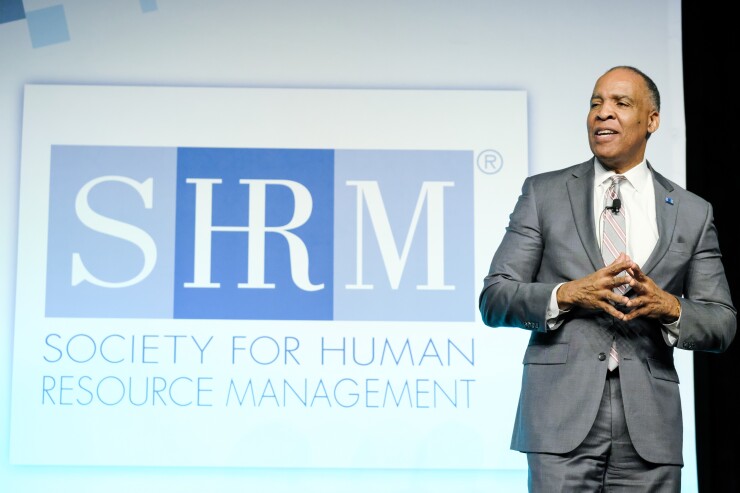The Society for Human Resource Management’s CEO Hank Jackson gave his final State of the Society speech Thursday, urging HR and benefits managers not to “rest on their laurels” during a time when lawmakers are developing major overhauls affecting employers.
“Nothing stays the same in this dynamic world and those that stand still get left behind,” said Jackson, who will retire later this year. He said HR leaders must be prepared to give input and leadership to Congress on important issues that profoundly affect the workplace — from tax reform and health legislation to workplace flexibility.
In fact, about two weeks ago, a SHRM-developed bill — the Workflex in the 21st Century Act – was introduced by Rep. Mimi Walters (R-Calif.) in the U.S. House of Representatives. It would provide expanded paid leave and workplace flexibility for all employees, which also aims to create greater predictability for employers.

He praised SHRM’s advocacy over the years during the crafting of different legislations, from preserving 401(k)s and keeping healthcare affordable, to other measures that allow employers to use more flexibility with benefits to recruit and retain needed talent.
Legislation in Washington will mean one thing to lawmakers as they create bills that affect the workplace, but in reality it means something else when it comes to how it affects an organization or when employers are trying to get the talent they need, he said.
“This is why I believe there has never been a time more exciting to be working in human resource management,” he said. “It’s like being an internet startup in the ‘90s or an American carmaker in the ‘50s. We’re on the verge of something big and important. It’s HR’s time; our time to lead the future of business and work.”
Jackson also noted the importance of having the right talent in the workplace to accomplish business objectives.
“I think most senior leaders get it now,” he said. “If you don’t have the right people around you you’re not going to be successful.”
“Know what the drivers of your business are. That will drive who you recruit, how you recruit, and how you pay [employees].”





